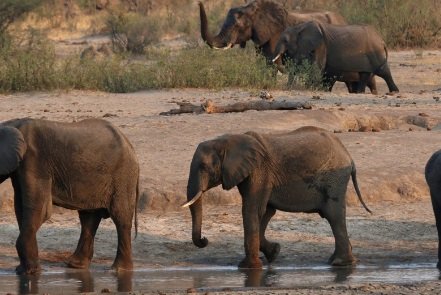Southern Africa is currently grappling with one of its worst droughts in over a century, causing widespread food shortages and forcing governments to make tough decisions. Countries like Zimbabwe and Namibia have initiated wildlife-culling programs as a response to the food insecurity caused by the ongoing environmental disaster. The controversial decision to cull elephants and other wildlife aims to alleviate human suffering during the crisis, but it has sparked heated debate about the ethics of such actions and the broader implications for conservation.
What is Causing the Drought?
The primary driver of this devastating drought is the El Niño weather pattern, which has resulted in significantly less rainfall across the region. The impact of climate change is exacerbating the situation, making droughts more frequent, prolonged, and severe. Southern Africa’s ecosystems are fragile, and these environmental stresses are pushing both human and animal populations to the brink of survival.
Government Responses: A Desperate Measure
In response to the food crisis, Zimbabwe has announced plans to cull 200 elephants, distributing their meat to poor communities. Namibia has taken similar steps, permitting the culling of 723 animals, including elephants, hippos, and zebras, from its national parks. These measures are intended to provide much-needed food to communities suffering from hunger as a result of the drought.
While culling is seen by some as a practical solution to feed people during this crisis, it highlights the dire situation faced by these countries and raises questions about long-term conservation efforts. In the short term, however, the meat from these animals is seen as a lifeline for many who are struggling to survive.
Human-Wildlife Conflict Intensifies
As drought conditions worsen, both wildlife and humans are competing for scarce resources like food and water, leading to an increase in human-wildlife conflict. In Zimbabwe alone, at least 31 people have lost their lives this year due to clashes with wildlife, particularly in dry areas like Hwange National Park. Desperate for sustenance, animals are venturing into human-populated areas in search of food and water, creating dangerous situations for both people and wildlife.
Implementation of the Culling Program
Zimbabwe’s Environment Minister defended the culling program as a necessary step to manage the growing elephant population, which the country’s fragile ecosystem can no longer sustain. With over 100,000 elephants, Zimbabwe’s elephant population is nearly double the country’s carrying capacity. Hunting permits have been issued in areas most affected by food shortages, particularly where the elephant population is excessive, further stressing the local ecosystem.
Namibia, facing similar challenges, has also justified its decision to cull wildlife to protect human livelihoods and to ease the pressure on the land. These actions, while controversial, are framed as emergency measures to manage the immediate food crisis.
The Dilemma of Culling: A Controversial Solution
The decision to cull elephants and other animals is a complex and emotionally charged issue. On one hand, it is seen as a pragmatic solution to feed starving communities and manage wildlife populations in a region where resources are scarce. On the other hand, it raises ethical concerns about conservation and the potential long-term damage to wildlife populations that are already vulnerable due to habitat loss and climate change.
What is El Niño?
The El Niño weather pattern occurs when the central and eastern Pacific Ocean becomes warmer than usual, affecting weather systems globally. It typically occurs every 2-7 years, and its effects vary by region. In Southern Africa, El Niño often leads to droughts, while it can cause heavy rains in the Americas. Besides its impact on weather, El Niño also affects marine life by shifting fish populations, which in turn affects local economies dependent on fishing. Scientists monitor El Niño by tracking ocean temperatures and wind patterns, as its influence on global climates can be profound.
Balancing Human Needs and Environmental Health
Southern Africa’s current drought crisis has brought into sharp focus the delicate balance between human needs and environmental sustainability. The culling programs in Zimbabwe and Namibia reflect the desperation felt by governments trying to address immediate food insecurity while grappling with the ethical complexities of wildlife management. As the region faces more frequent and severe climate-related challenges, solutions must be found that not only address short-term needs but also preserve the natural environment for future generations.
The world will be watching closely as Southern Africa navigates this difficult path, seeking ways to balance conservation efforts with the urgent need to alleviate human suffering during one of the worst droughts in recent history.


